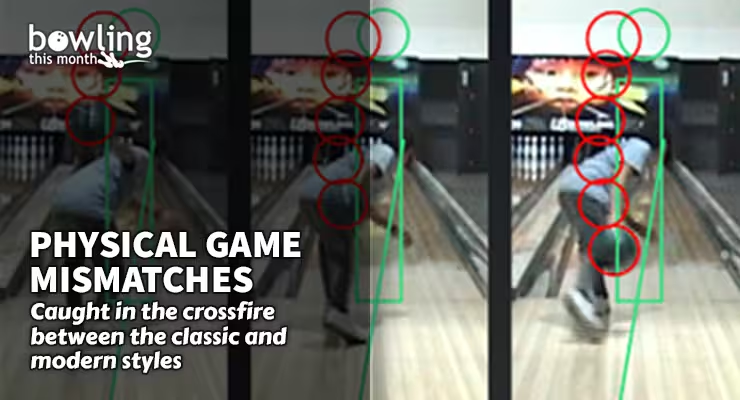Article Contents
- 1. Learning through imitation
- 1.1. Imitation in bowling
- 1.2. The dangers of imitation
- 2. The classic/modern crossfire
- 2.1. Adding a crossover step
- 2.2. Creating an inside-out swing
- 2.3. Getting your hand behind the ball
- 2.4. Bending your elbow for more revs
- 3. What are we looking for in bowling?
- 4. Final thoughts
Note: This article is only available to Bowling This Month subscribers.
As many BTM readers know, bowling’s older days rewarded precision. The lanes, oil patterns, and bowling balls combined to create an environment where accuracy and precision were the most important elements of the game. As a result, the dominant way to bowl was using a technique with simpler movements, reducing the margin for error.
This changed as bowling balls became more powerful, oil patterns became more consistent, and the lane materials evolved to create an environment where power became increasingly important. This isn’t to say that you don’t need to be precise to be an elite bowler in today’s game. Rather, the reality is that power is now at least as important, if not more so, than precision.
Developing more power means bowling with a more complex and dynamic movement. Whether you bowl one-handed or two-handed, the modern game of bowling is very different from the days of old.
As more classic bowlers try to adopt modern techniques, and newer bowlers start out with more complex movements in mind, the questions become how best to learn them and how to know which elements work best for you.
Learning through imitation
Let’s step back from coaching, technical instruction, and video analysis and examine how kids learn. If we take the example of teaching a child to hit a baseball, which of these two approaches do you think works best?
- Describing and breaking down the finer points, including how to hold the bat, foot placement, hip and shoulder rotation, elbow position, and every other little detail.
- Watching a demonstration and trying to imitate the movement through trial and error.
When first getting started, imitation wins every time. It’s only after some level of proficiency develops that you can add even simple details to the process.
Imitation in bowling
This is how many people learn the game of bowling as well. Someone who grew up watching Pete Weber bowl might naturally adopt a high backswing. A young bowler who idolizes Jason Belmonte might end up with a game that looks like him as …
Click Here to Read the Full Original Article at Bowling This Month…
